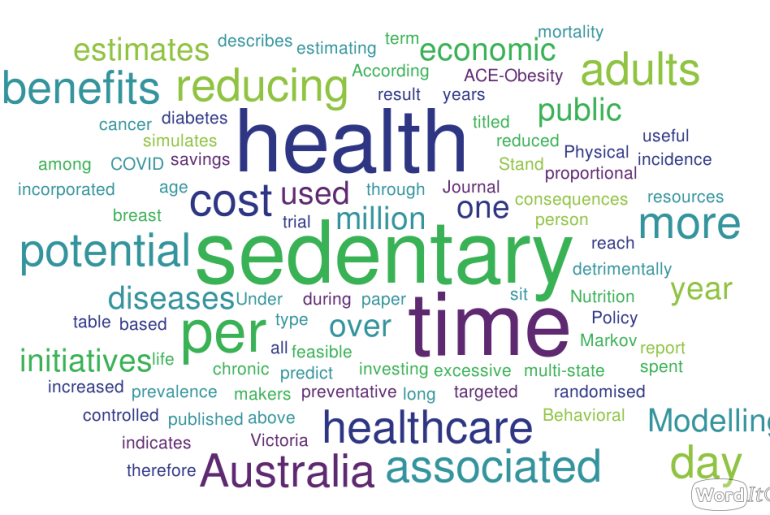Strong evidence indicates that excessive time spent sitting (sedentary behaviour) is detrimentally associated with multiple chronic diseases. A paper titled “Modelling the potential health and economic benefits of reducing population sitting time in Australia” has recently been published in the International Journal of Behavioral Nutrition and Physical Activity and describes the development of the first Australian sedentary behaviour model that can be used to predict the long term consequences of interventions targeted at reducing sedentary behaviour through reductions in sitting time.
The authors report that sedentary behaviour is prevalent among adults in Australia and has increased during the COVID-19 pandemic. Therefore, estimating the potential health benefits and healthcare cost saving associated with reductions in population sitting time, could be useful for the development of public health initiatives.
A sedentary behaviour model was developed and incorporated into an existing proportional, multi-state, life table Markov model (ACE-Obesity Policy model). This model simulates the 2019 Australian population (age 18 years and above) and estimates the incidence, prevalence and mortality of five diseases associated with sedentary behaviour (type 2 diabetes, stroke, endometrial, breast and colorectal cancer).
According to the model, if all Australian adults sat no more than 4 h per day, this would result in health care cost savings of approximately A$185 million over one year. Under a more feasible scenario, where sitting time was reduced in adults who sit 4 or more hours per day by approximately 36 min per person per day (based on the results of the Stand Up Victoria randomised controlled trial), healthcare cost saving could reach A$39 million over one year.  These estimates may be used by decision makers when prioritising healthcare resources and investing in preventative public health initiatives.
These estimates may be used by decision makers when prioritising healthcare resources and investing in preventative public health initiatives.
Read the full article here
![]()










Comments are closed.